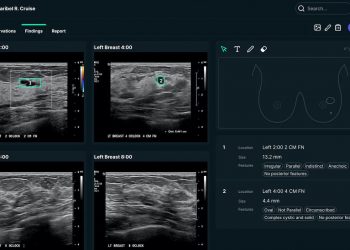What exactly the metaverse is varies, depending on the source, from interacting with others within a virtual space to completely residing in a virtual environment through virtual reality, augmented reality or mixed reality.
Still, there’s a lot of talk around the potential of the metaverse in the healthcare sector and how it will affect health-related content creation and distribution.
Sam Glassenberg, CEO and founder of Level Ex, a video game company offering software to remotely train surgeons, says a version of the metaverse is already part of healthcare.
Glassenberg sat down with MobiHealthNews to discuss the company’s immersive offerings and how he views the evolution of the metaverse in healthcare.
MobiHealthNews: How would you define the metaverse? Because it doesn’t sound like you’re only thinking about it from a virtual reality perspective.
Sam Glassenberg: Correct. I think there’s this whole idea that Web3, for example, is going to be in virtual reality. And I think some of it might be, but when we think about Web2, it was accessed in the same browser as Web1. So, this idea that the metaverse is all going to be in VR, I think is misplaced. And this is from somebody with, you know, a horse in the race. I mean, we make VR experiences.
But what we’ve seen, for example, is we’ve had 800,000 medical professionals play our games on mobile; we’ve had 80,000 use mobile AR where I project a virtual patient, digital twin into the environment. We’ve had about 8,000 use AR headset experiences. So what we find with VR and AR is like, it’s a great experience, but it reduces your reach by two orders of magnitude.
So I think in the future, when we’re all walking around with AR glasses and it’s just part of the environment, then that’s going to be the primary mode where you’re accessing this stuff. But I think that’s about a decade away. Between now and then, you can access it on your VR headset. But a lot of it’s just going to be on your phone in your web browser.
MHN: How do you see Level Ex working within the metaverse? What are your thoughts on how digital health is going to change with the rise of the metaverse?
Glassenberg: When it comes to the metaverse, there’s a lot of hype. I’ve spent my career in video games. I used to work at LucasArts. I used to run the DirectX graphics team at Microsoft. My last company did games for Hollywood movies — Hunger Games and Mission Impossible.
At Microsoft, my team’s job was to basically build what you would call the underlying infrastructure for the metaverse. And these technologies are starting to have a major impact outside of games. It’s changing the way people learn. It’s changing the way companies interact with their customers. It’s changing the way people collaborate remotely.
I feel like these technologies are delivering on the promise of the metaverse. But the metaverse we read about, in the news mostly, is like a scam at worst and, at best, an ill-informed projection of where this stuff goes. At the same time, what we’re seeing is … life science and med-tech companies basically use this technology to help accelerate adoption of their products, lift sales and help doctors understand how to use their products to their benefit.
MHN: What is Level Ex building using immersive technologies?
Glassenberg: What we do is, we’re able to capture any complex mechanism of disease or mechanism of action and create a game that can be played collaboratively by multiple people together in real time over Zoom, to learn about the mechanism of action or disease.
MHN: How do you see this evolving as the metaverse changes?
Glassenberg: So when we think about what the future is, it’s changing the way med device companies interact with their customers. We’re already doing that. Yeah, med device companies are already training doctors. By early next year, you’ll have doctors in 10 different specialties training collaboratively with sales reps over Zoom.
So I think that’s the future of the metaverse. Sometimes, it includes VR, but sometimes, you’re just accessing it from your phone. And sometimes, you’re engaging one-on-one. Sometimes, you’re engaging in large groups. The example I like to give is we have versions of [an offering] that we can run in a peer-to-peer mode, where instead of just having you and me play together, you can have up to 400 people in person or remote, collaborating and competing from their phones in a virtual environment to diagnose and treat virtual patients. We’ve been doing this with pharma clients, with med device clients, and I got hundreds of people all on their phones, interacting with virtual patients simulated in the cloud. That’s the promise of the metaverse.
Source by www.mobihealthnews.com











